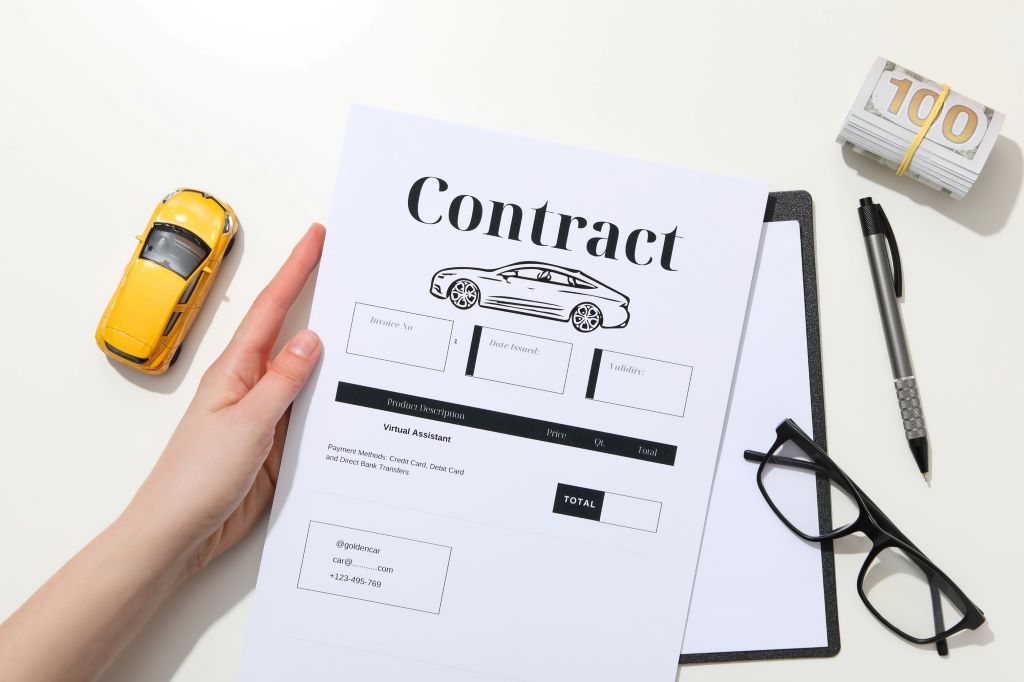Leasing a car can be a smart choice—lower monthly payments, driving new models every few years, and fewer maintenance headaches. But sometimes life throws you a curveball: a relocation, changes in financial situation, or simply realizing the lease no longer fits your lifestyle. If you find yourself asking, “How can I get out of a car lease early without penalty?” you’re not alone. Breaking a lease early can be costly and stressful if you don’t know the right steps to take.
In this comprehensive guide, we’ll unlock proven strategies to help you exit your lease agreement early without steep fees. You’ll learn practical tips, alternatives, and insider knowledge to make an informed decision. Whether you want to reduce financial burden or upgrade your ride, this article will be your roadmap to a penalty-free lease exit.
Understanding Car Lease Agreements and Early Termination Penalties
Before diving into solutions, it’s critical to grasp how leases work. A car lease is essentially a contract where you “rent” the vehicle for a fixed term—usually 24 to 36 months—by paying monthly installments based on the vehicle’s depreciation and use.
Early termination fees are designed to recoup losses for the leasing company when you end the contract before the agreed date. These fees can include:
- Early termination penalty fees – Often several hundred to thousands of dollars.
- Remaining monthly payments – You might be responsible for the leftover payments on the lease.
- Disposition fees – Charges for inspection and preparing the vehicle for resale.
- Excess mileage and wear-and-tear charges – If the vehicle’s condition goes beyond lease terms.
However, it’s important to remember these fees and terms vary widely between leasing companies and contracts. The good news? There are ways to mitigate or avoid these penalties altogether.
-
Transfer Your Lease to Someone Else: The Most Common Solution
One of the most popular and simplest ways to get out of a car lease early is by transferring the lease to another individual. Also known as a lease assumption, this involves finding someone willing to take over the remaining payments and terms of your lease contract.
How Lease Transfers Work:
- You find a qualified buyer through lease transfer platforms or personal networks.
- With leasing company approval, the new lessee signs the agreement to assume the lease.
- You are released from your financial obligation and penalty risks.
Benefits:
- No early termination fees.
- You avoid heavy financial burdens of paying remaining lease payments.
- The new lessee takes over responsibility for the car.
Things to Consider:
- Not all leasing companies allow transfers—check your lease contract.
- You may have to pay a small transfer or application fee (usually a few hundred dollars).
- The new lessee must pass credit approval.
- Transfer platforms like Swapalease or LeaseTrader can help connect you to interested parties.
-
Negotiate With Your Leasing Company
If a lease transfer isn’t an option or timing doesn’t allow, calling your leasing company to discuss your situation directly can be surprisingly effective.
What to Ask:
- Can I terminate early with reduced or no penalties?
- Are there any hardship programs or lease buyout assistance?
- Can you offer flexible payment plans to ease paying off remaining balance?
Leasing companies sometimes make exceptions, especially if you’re facing financial hardship, relocating for work, or experiencing other legitimate issues.
How to Negotiate:
- Be honest and proactive.
- Demonstrate your willingness to cooperate or explore alternatives.
- Ask about lease buyout options or rolling over your lease into a new vehicle.
Benefits:
- May reduce financial penalties.
- Can explore customized solutions.
- Retain goodwill with the leasing company.
-
Buy Out the Lease and Sell the Car
Another way to exit your lease early is to buy out the car by paying off the remaining lease balance and any fees, then sell the car yourself.
What You Need to Know:
- Lease Buyout Price: This is the residual value plus fees and any remaining payments.
- If the vehicle’s market value is higher than the buyout price, this can work in your favor.
- You assume ownership, so you can sell, trade, or keep the car.
Steps:
- Contact your leasing company for the exact buyout price.
- Arrange financing if needed (personal loan or auto loan).
- Pay off the lease and take ownership.
- Sell the vehicle privately or trade it at a dealer for better value.
Pros:
- Potential to avoid steep penalties if the vehicle value exceeds buyout.
- Freedom to sell or keep the car.
Cons:
- Upfront cash or financing required.
- Risk if the car’s value is less than buyout price, resulting in a loss.

-
Trade in Your Lease for a New Vehicle
Many dealerships offer lease trade-in programs allowing you to trade your current leased car for a new lease or purchase.
How It Works:
- Dealer assesses your leased vehicle.
- Applies the equity (difference between market value and residual value of your leased car) as down payment on your new vehicle.
- You start a new lease or financing agreement.
Advantages:
- One-stop solution to switch cars.
- Avoid early termination fees if dealer accepts payoff.
- Upgrade your vehicle with minimal hassle.
Drawbacks:
- Equity may go toward fees instead of down payment if negative.
- Leasing a new car may extend ongoing financial commitments.
-
Return the Vehicle and Accept the Fees—Sometimes It’s Worth It
If all else fails, returning the car early and paying the fees might be your only option.
What Happens When You Return Early:
- You pay early termination fees.
- You may owe remaining payments or penalties.
- The vehicle is inspected for additional charges.
How to Minimize Impact:
- Plan ahead and save to cover expected fees.
- Get a breakdown of costs before returning the vehicle.
- Consider timing (some pay penalties based on remaining term)—sometimes waiting a few months can reduce fees.
Additional Tips to Avoid Early Lease Penalties
- Review Your Lease Contract Thoroughly: Understand all early termination clauses before signing and during your lease.
- Keep the Vehicle in Excellent Condition: Minimize wear-and-tear charges during return or transfer.
- Track Mileage Closely: Stay within or close to your mileage allowance to avoid excess fees.
- Use Lease Transfer Services: These platforms streamline the transfer process and protect both parties.
- Consult Financial Advisors: Especially if your lease exit is due to financial hardship.
Frequently Asked Questions (FAQs)
Can I get out of a car lease early without paying fees?
It’s possible through lease transfers, lease buyouts, or negotiated deals with your leasing company. However, some fees may apply depending on your lease terms.
What is a lease transfer, and is it easy to do?
A lease transfer allows someone else to take over your lease. It requires leasing company approval and finding an interested party, which can be facilitated by online lease transfer marketplaces.
How much does it cost to terminate a lease early?
Early termination fees vary widely by lease agreement but can range from a few hundred to several thousand dollars, plus remaining payments and charges for wear and excess mileage.
Can I sell a leased car?
You cannot sell a leased car yourself unless you buy out the lease first. Otherwise, the leasing company owns the vehicle.
Is it better to buy out a lease or pay early termination fees?
If the residual value is less than the car’s market value, buying out the lease and selling the car can save money. Otherwise, early termination fees might be more cost-effective.
Conclusion: Take Control of Your Lease and Save Money
Getting out of a car lease early without penalty might seem daunting, but with careful planning and the right strategy, it’s achievable. Whether through transferring your lease, negotiating with your provider, buying out the contract, or trading in your vehicle, there are options to avoid costly penalties and regain financial flexibility.
Related Topics:
12 Most Profitable Automobile Business Ideas in 2022




